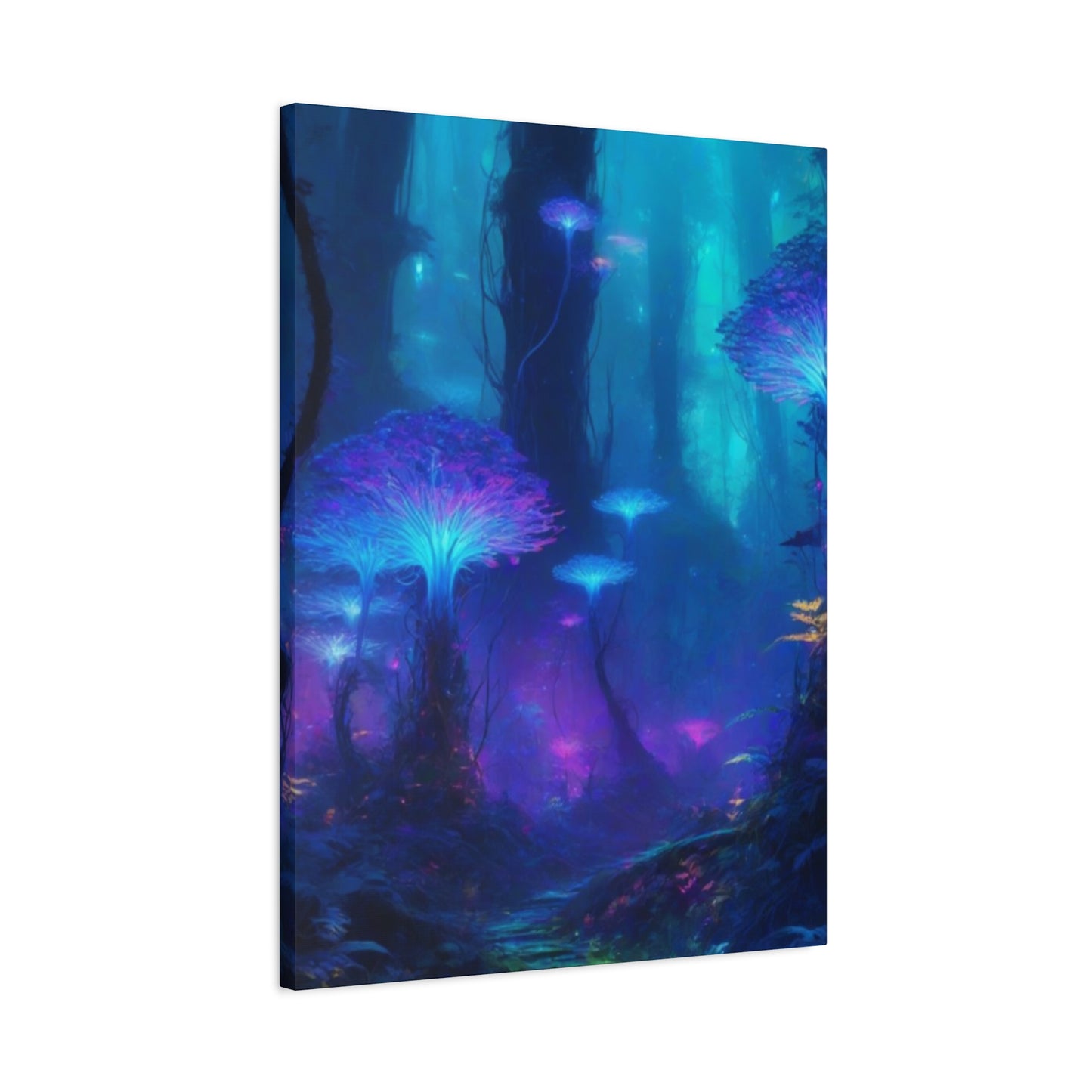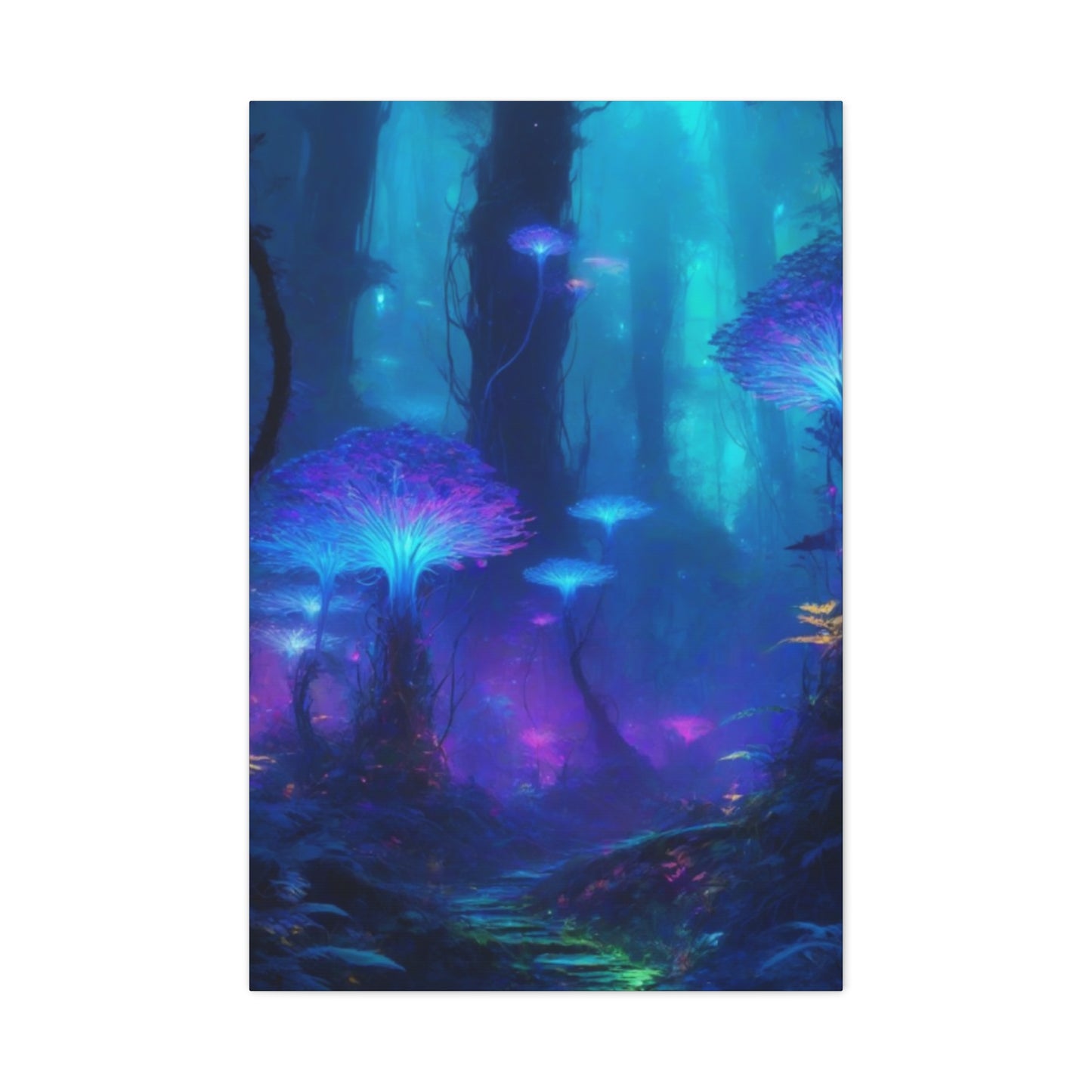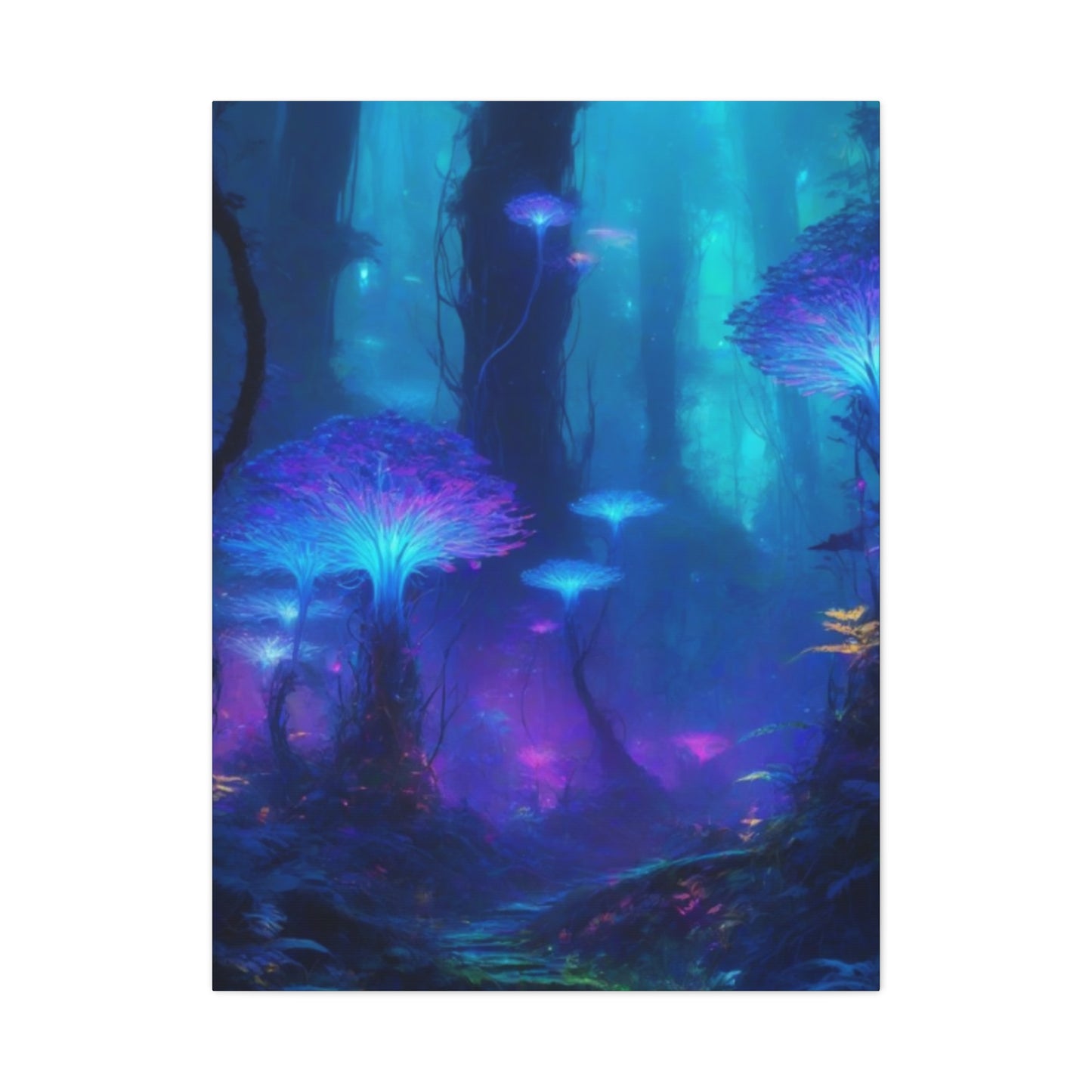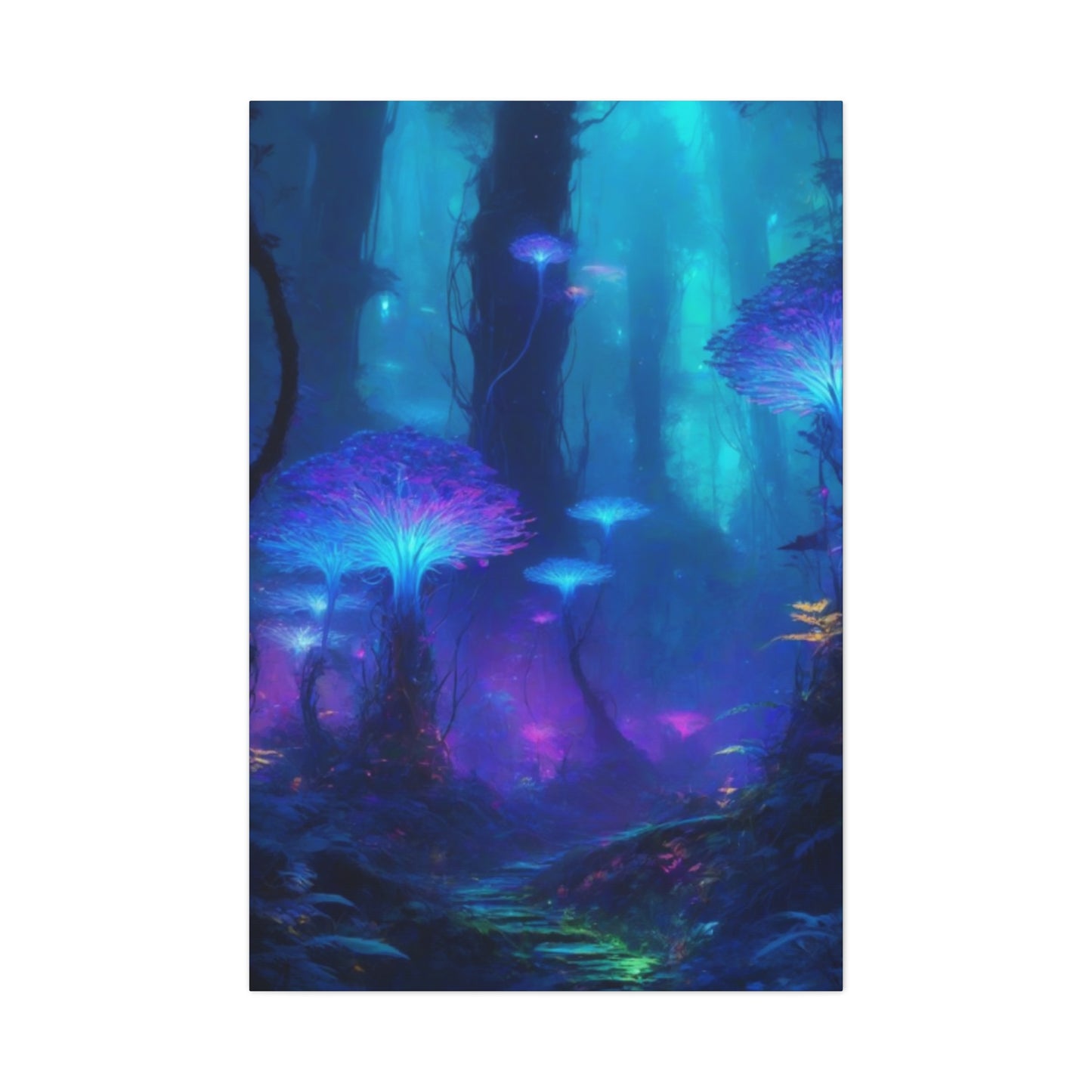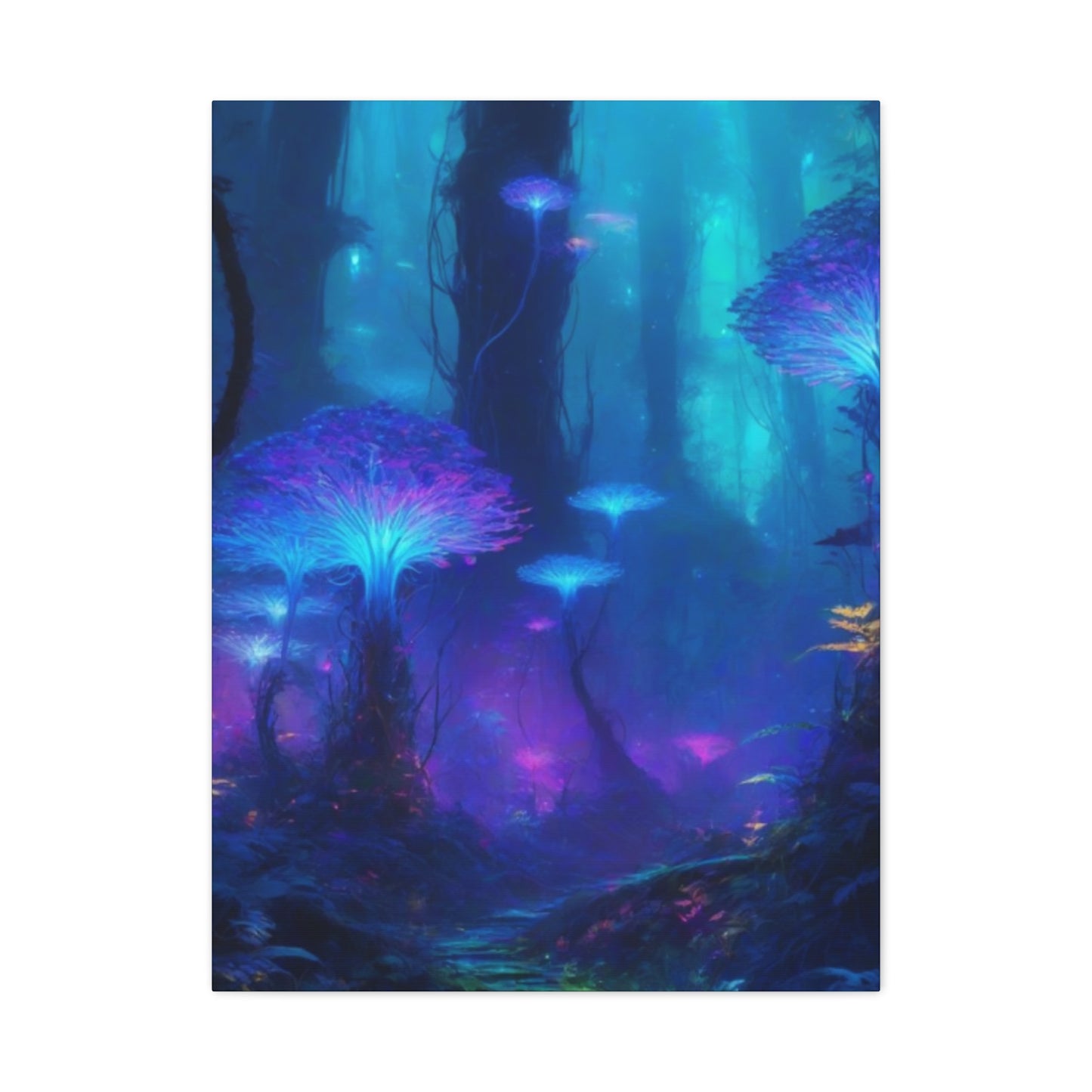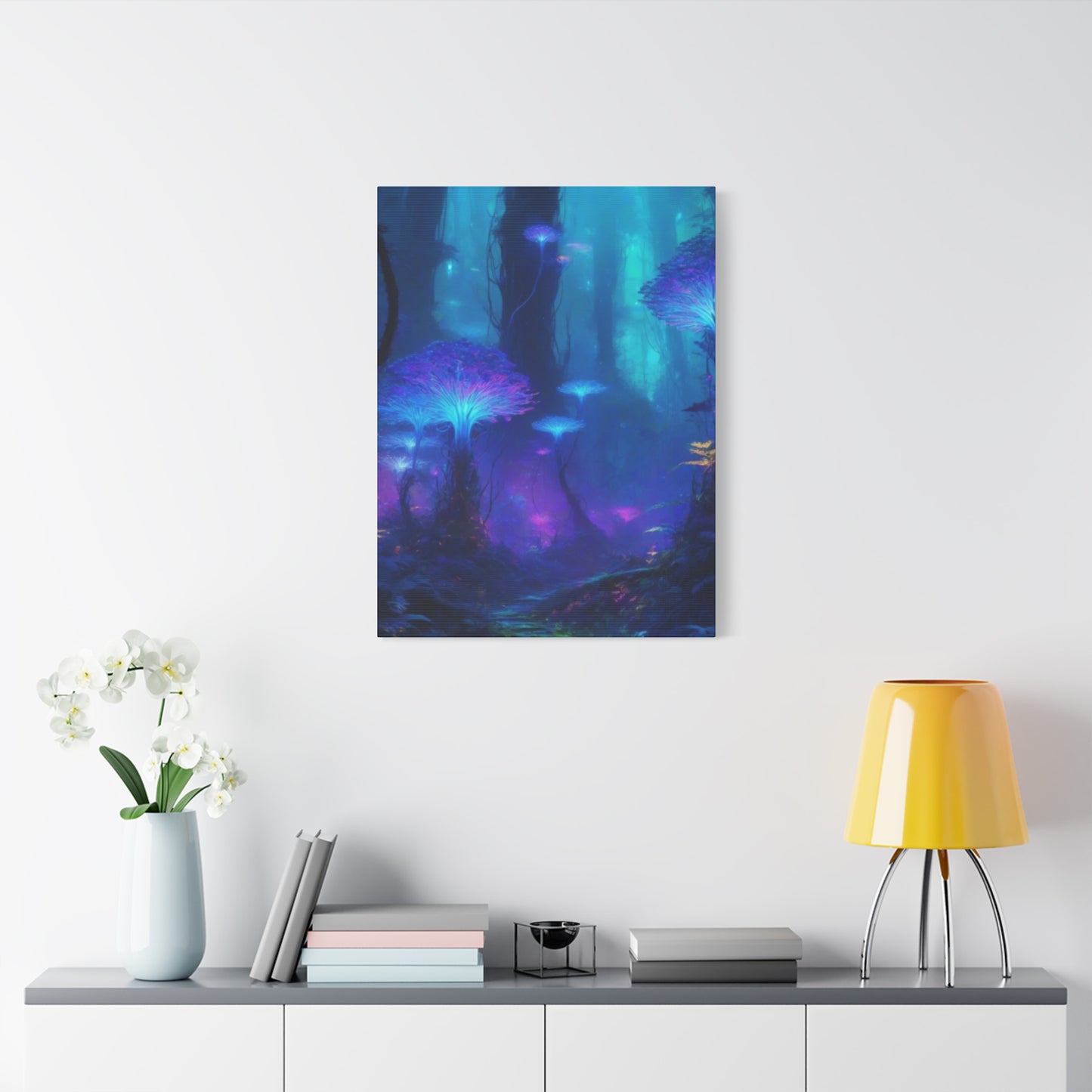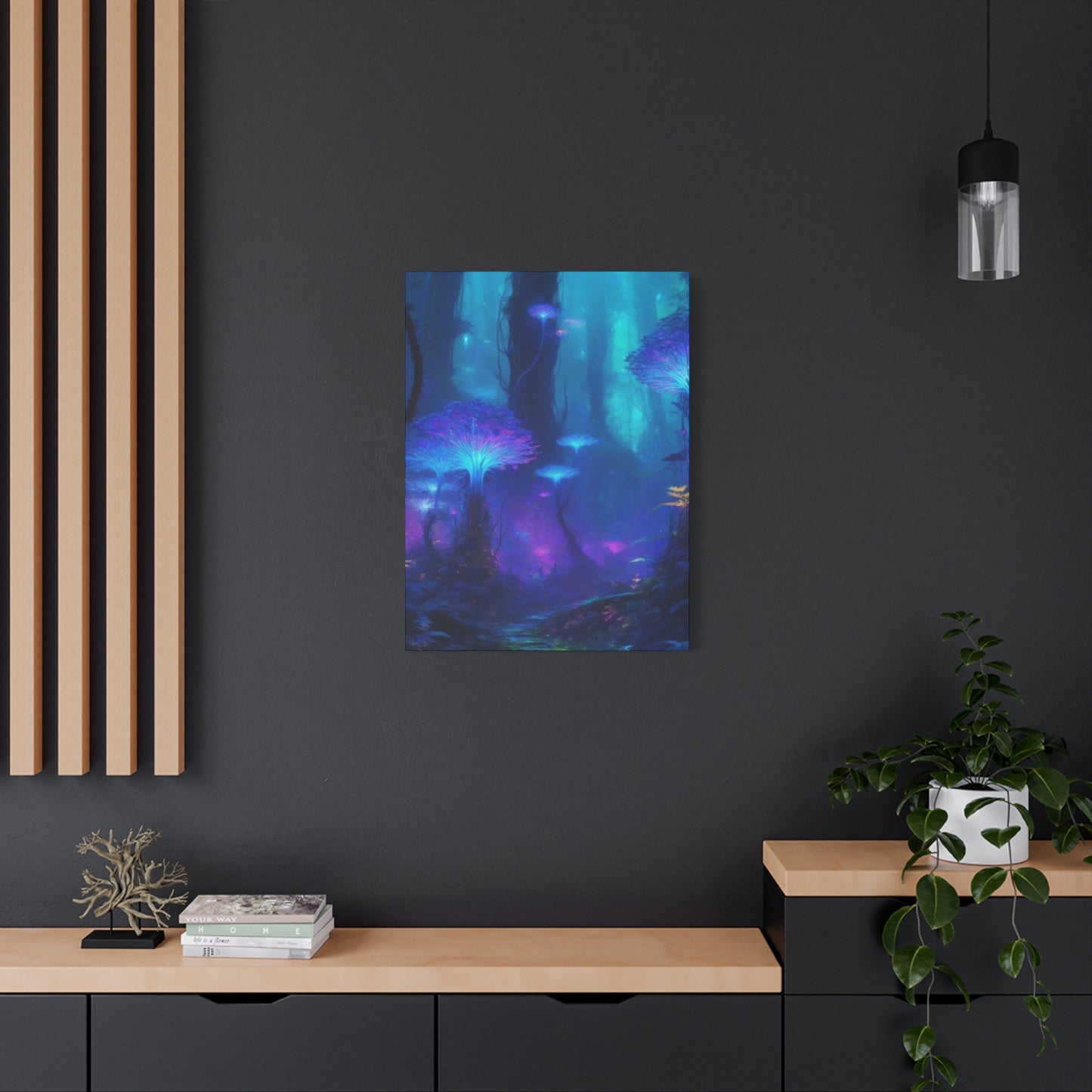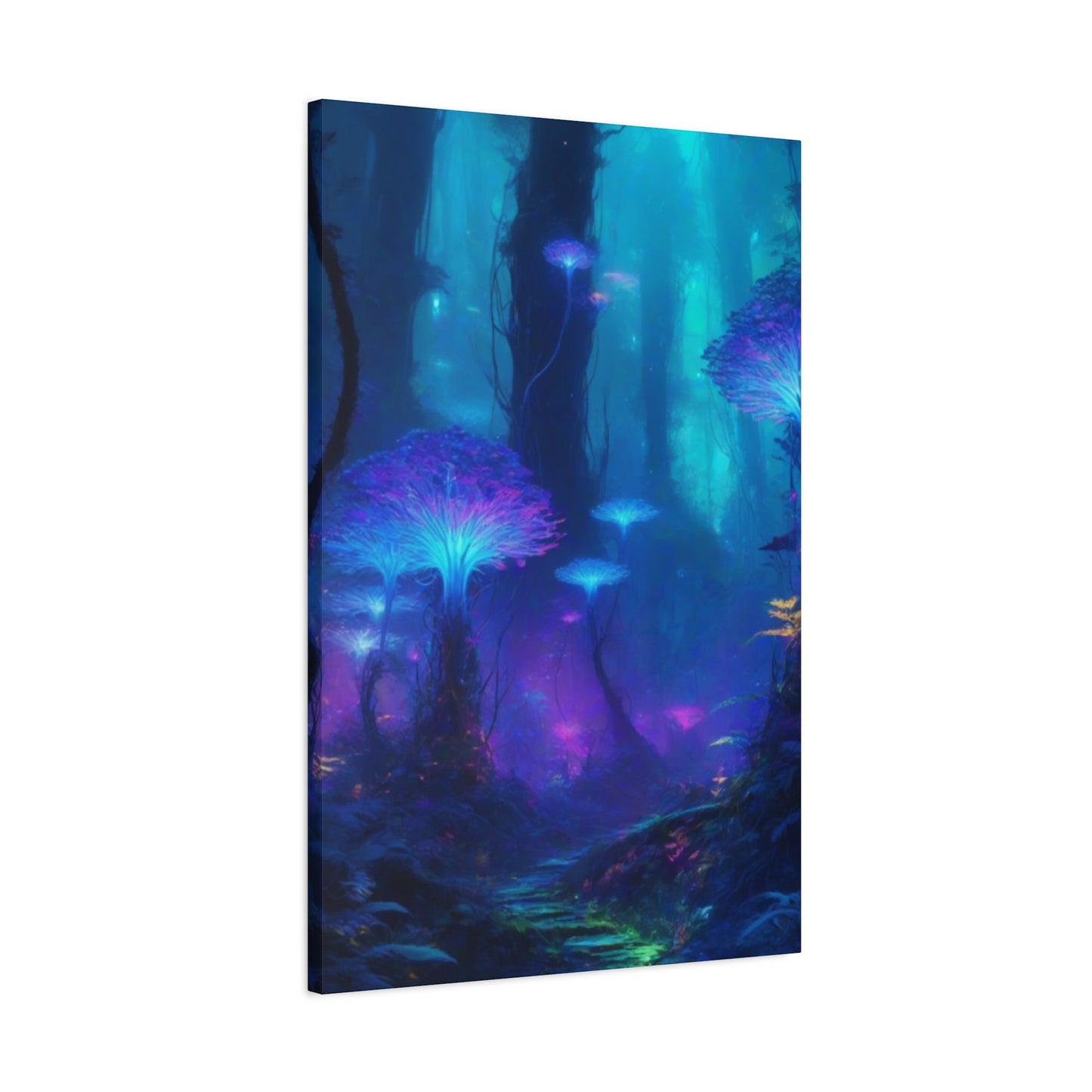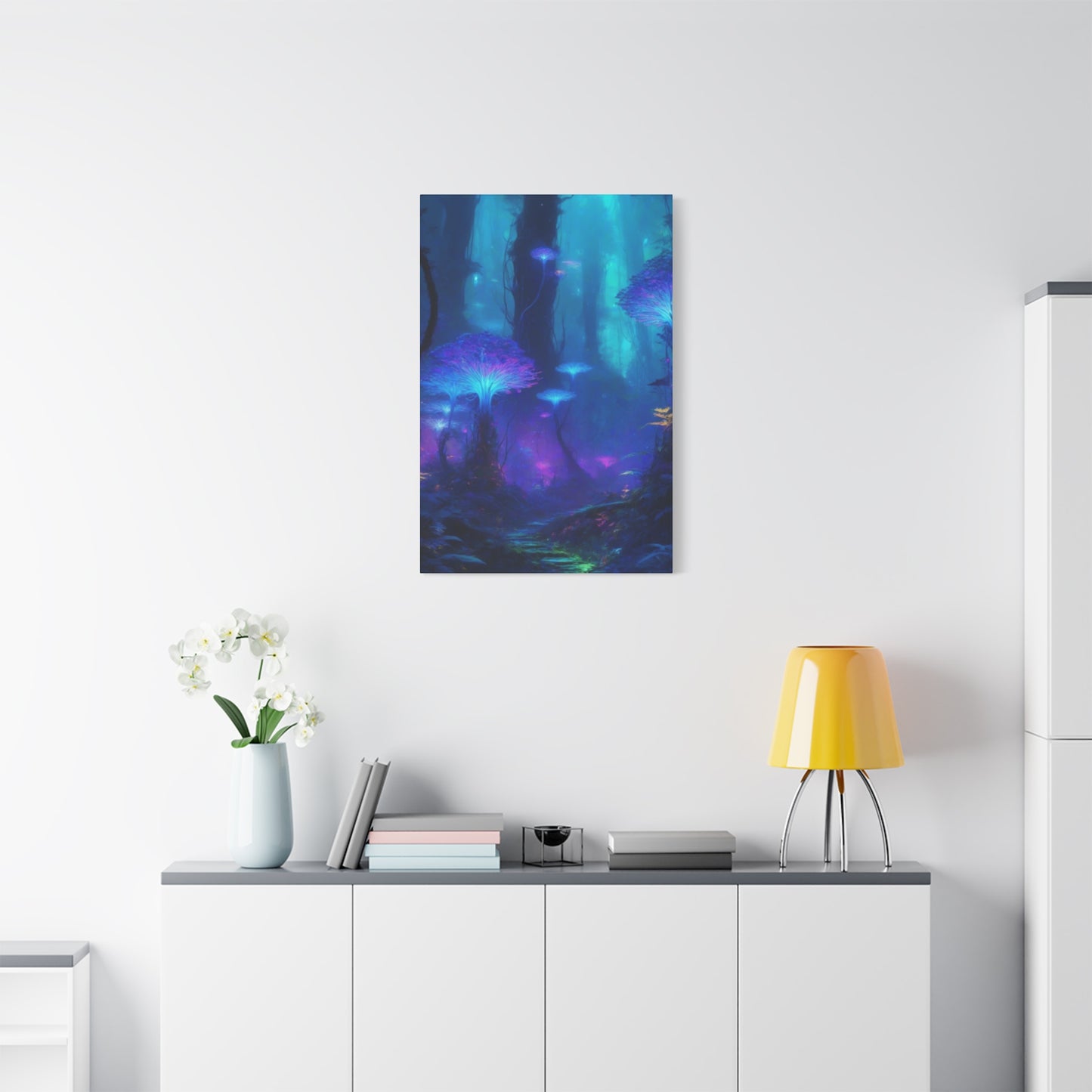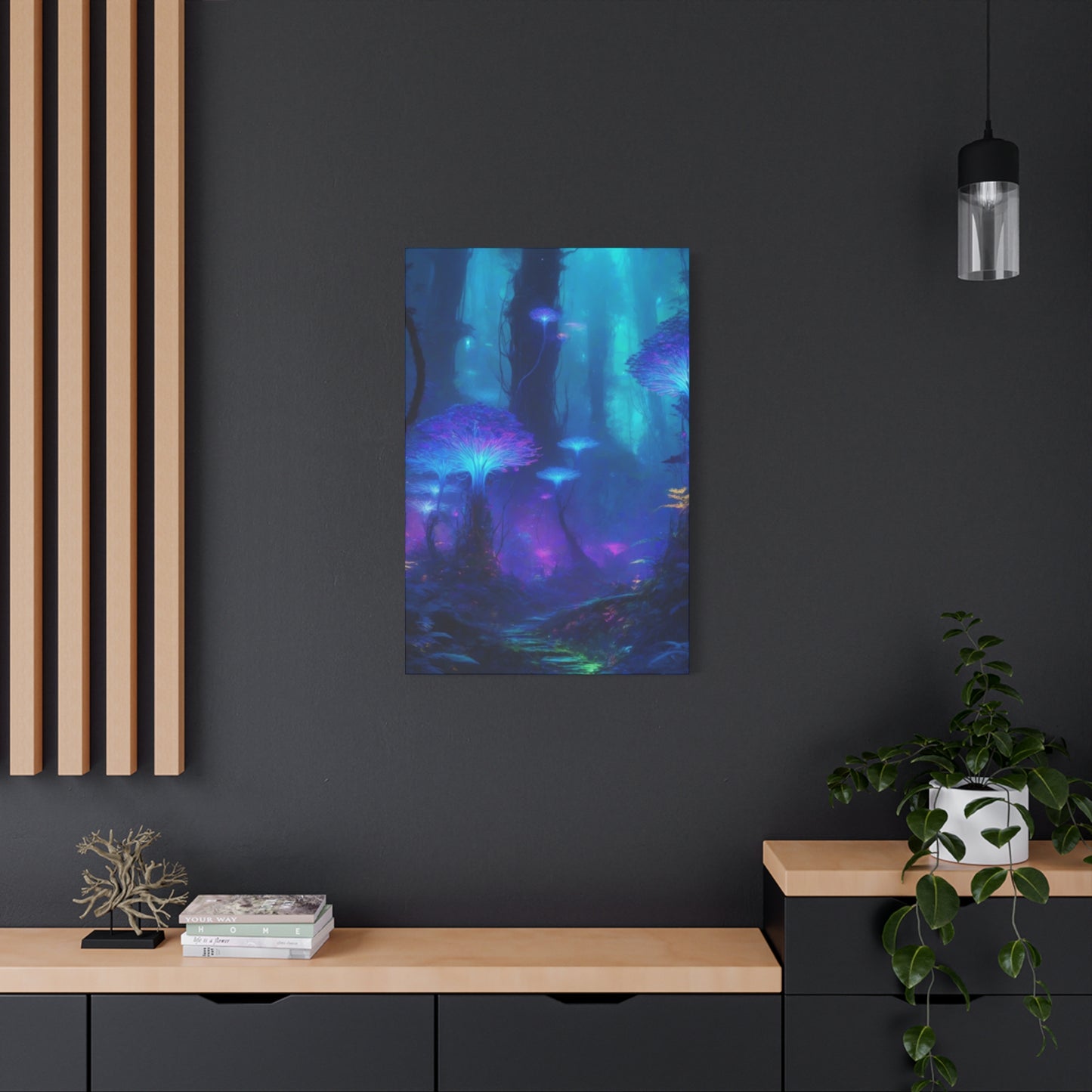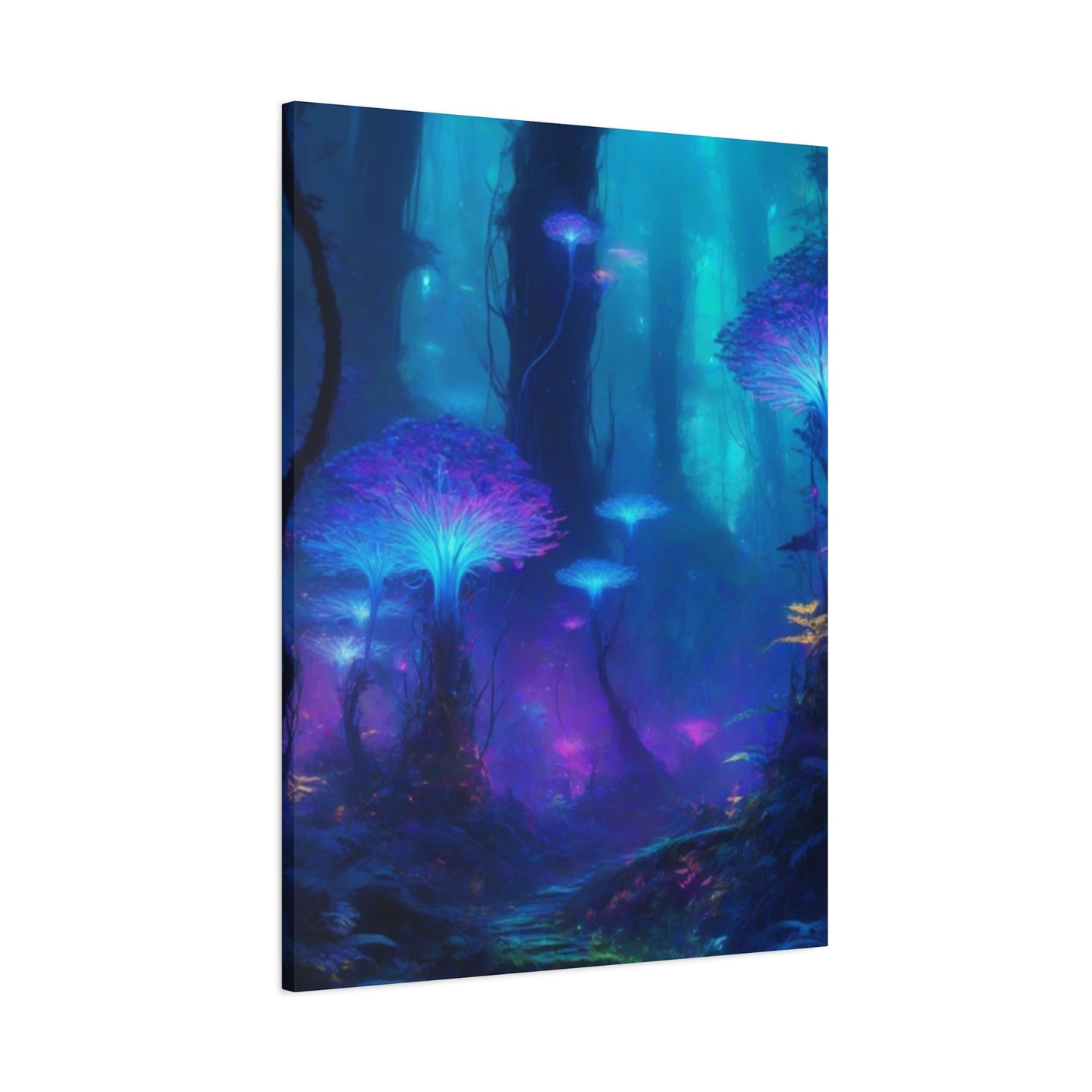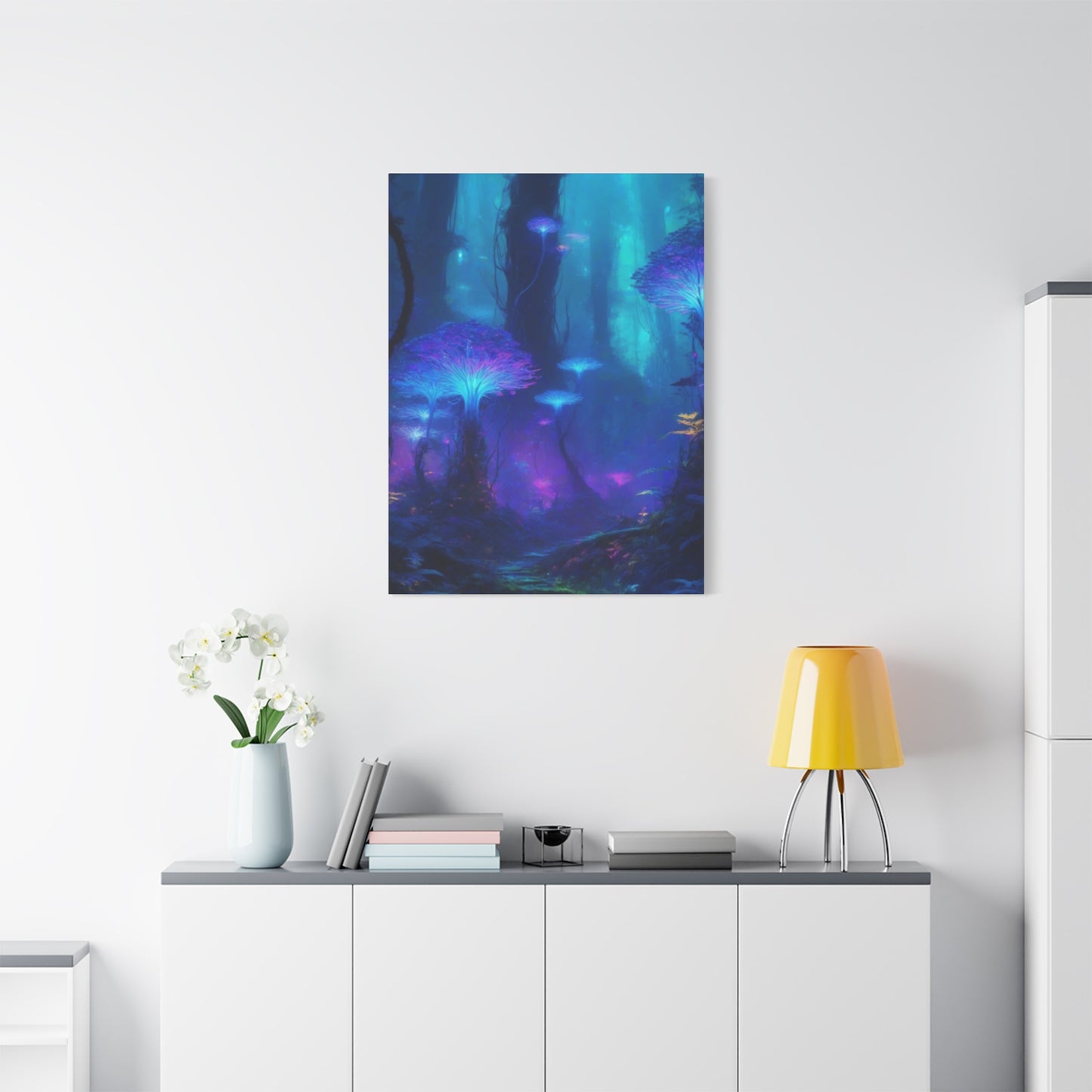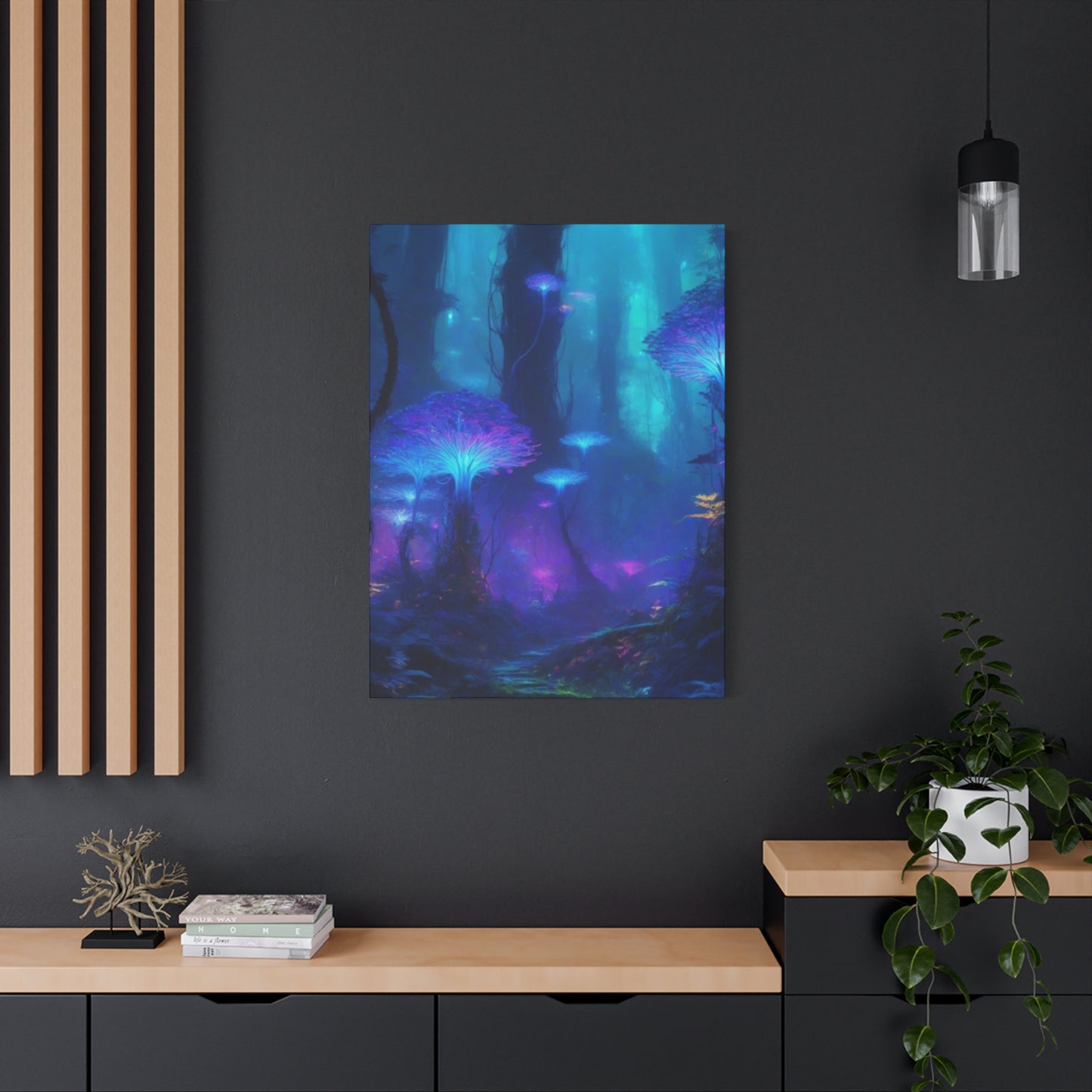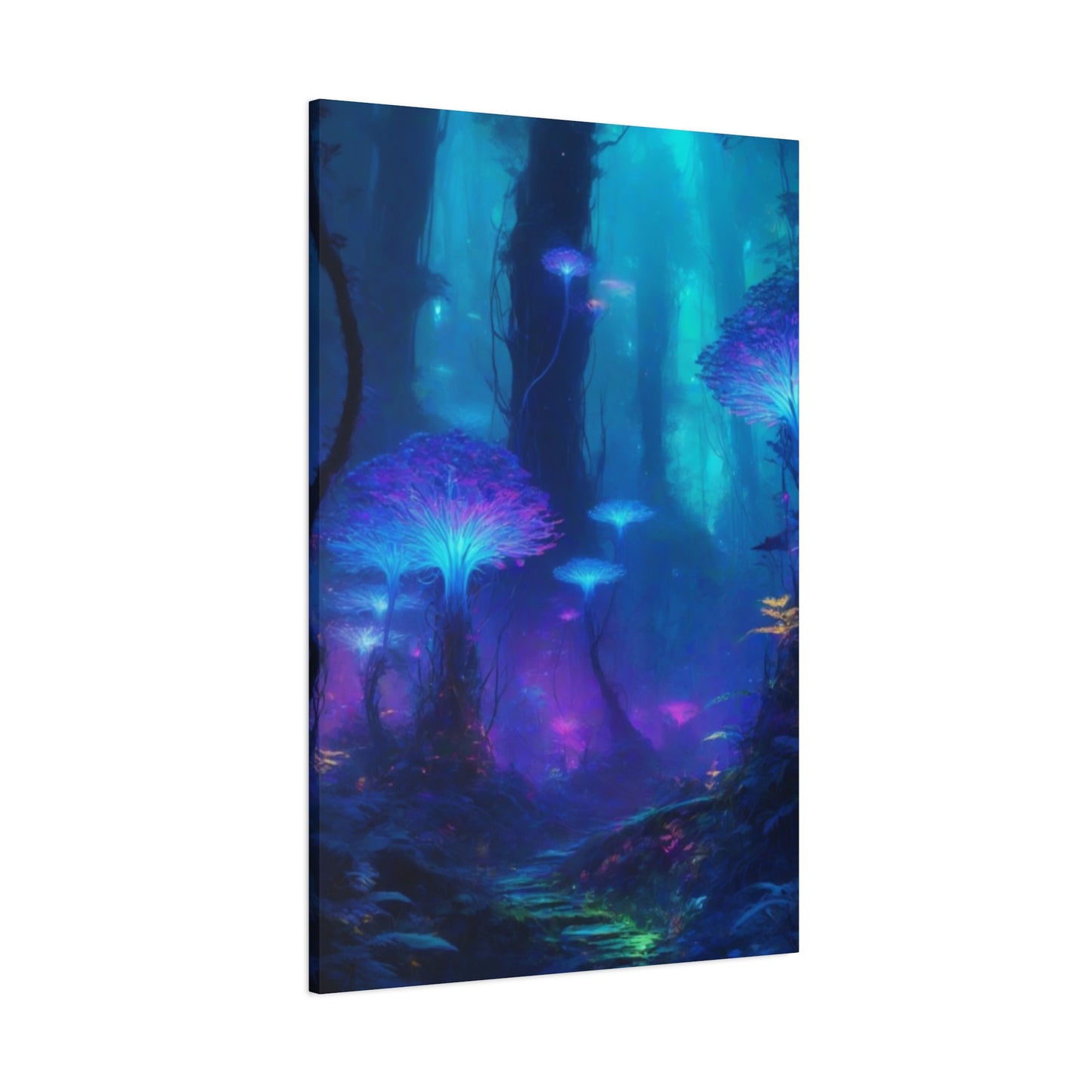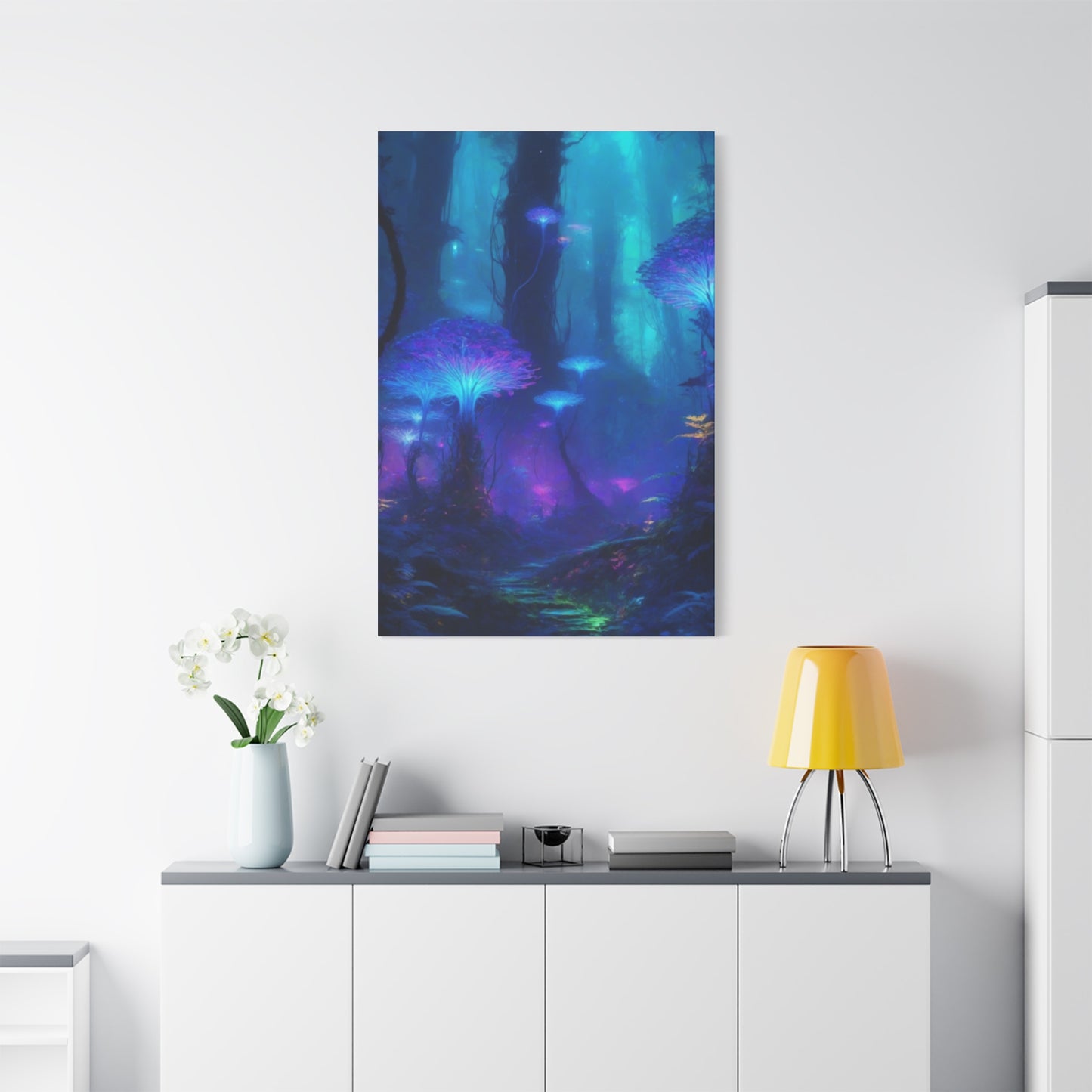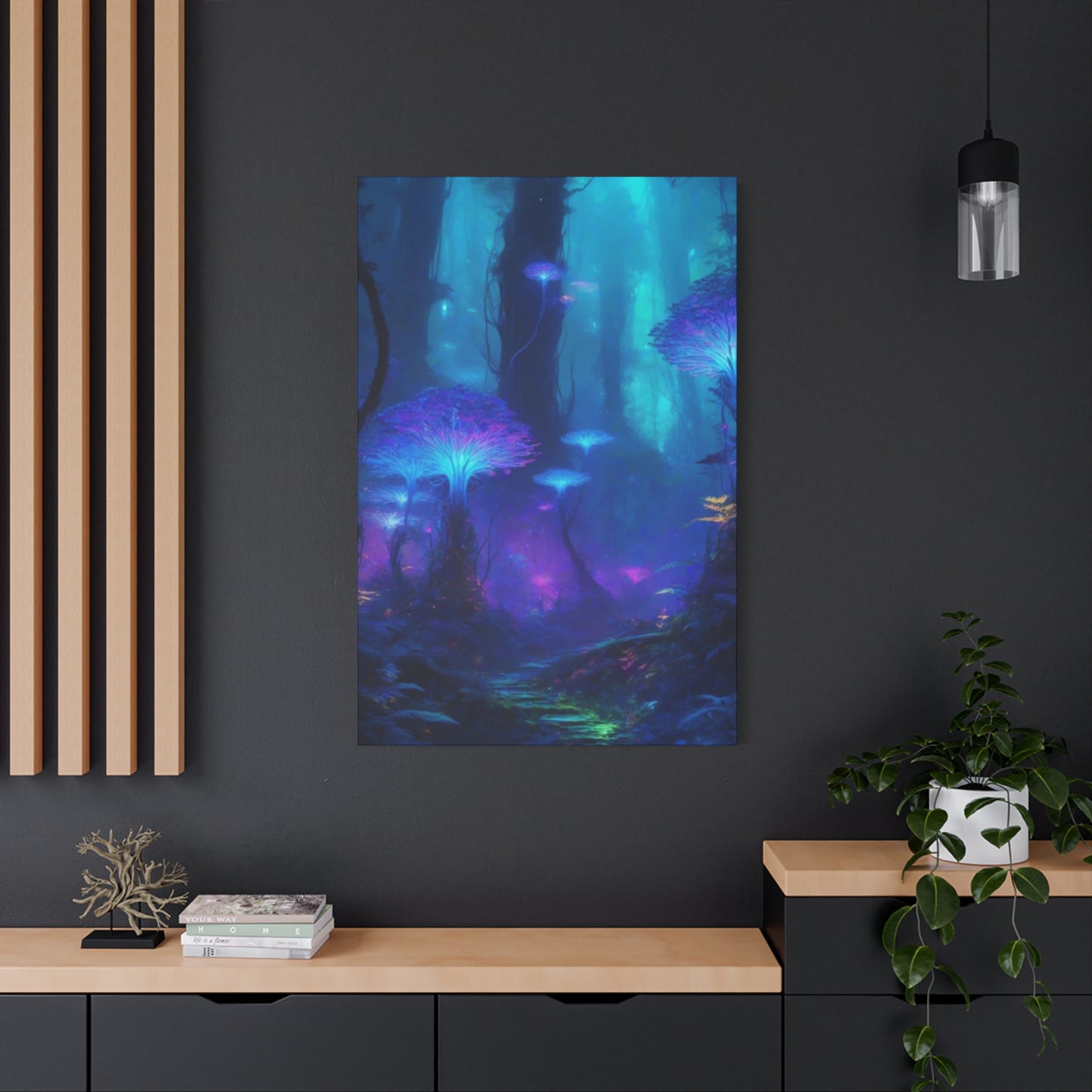A Comprehensive Guide to Transforming Your Space with Glowing Forest Wall Art
In the deepest recesses of our collective imagination, the forest holds a place of profound mystery and magic. It is a realm of towering sentinels, dappled light, and the quiet hum of life unseen. From the fairy tales of our youth to the epic fantasies that capture our hearts, the enchanted forest is a powerful archetype—a place of transformation, sanctuary, and wonder. Now, a captivating trend in home décor is bridging the gap between these imagined worlds and our everyday living spaces: glowing forest art.
This is not merely about hanging a picture of trees on a wall. It is about capturing the hidden, nocturnal magic of the woods—the ethereal luminescence of foxfire on a fallen log, the shimmering dance of a thousand fireflies, or the otherworldly glow of a moonlit glade from a forgotten tale. Glowing forest art uses special pigments that absorb light during the day, only to release it in a soft, mesmerizing radiance when darkness falls. It transforms a static image into a dynamic, living piece that shifts and changes with the light, offering two distinct experiences in one.
During the day, you might have a beautiful watercolor of a serene birch grove or a vibrant, neon-drenched depiction of a fantastical jungle. But as dusk settles and the lights dim, a secret world awakens on your wall. Constellations appear between the branches, mystical creatures emerge from the shadows, and pathways light up, inviting you into the heart of the canvas. This transformative quality does more than just decorate a room; it creates an atmosphere, enhances mood, and serves as a constant source of wonder and tranquility.
The appeal of this art form is universal. It speaks to the child in us who still believes in magic, the nature lover who yearns for a deeper connection to the wild, and the modern city-dweller seeking a serene escape from the hustle and bustle of daily life. It can turn a child’s bedroom into a protective wonderland, a master bedroom into a tranquil sanctuary, and a simple reading nook into a portal for the imagination.
This comprehensive guide will illuminate every facet of glowing forest art. We will delve into the science that makes it possible, explore the vast array of artistic styles available, and provide practical advice on how to seamlessly integrate these magical pieces into your home. From choosing the perfect colors and creating a complete sensory atmosphere to framing your art and even creating your own DIY masterpiece, you will discover how to harness the enchanting power of the glowing forest. Prepare to transform your room from a simple space into an immersive experience, a personal sanctuary where the magic is not just seen, but felt.
Understanding the Magic - The "What" and "How"
Before we can effectively use this captivating art form, it's essential to understand the technology and artistic choices that bring it to life. The "glow" isn't just a gimmick; it's a result of fascinating science and deliberate artistic application that gives each piece its unique nocturnal personality.
Glow-in-the-Dark Forest Art Explained
The magic behind a canvas that comes alive at night is rooted in a scientific phenomenon called photoluminescence. At its core, this is the process by which a material absorbs photons (light particles) and then re-emits them. There are two main types of photoluminescence you’ll encounter in art: fluorescence and phosphorescence.
Fluorescence happens when a material absorbs light (often invisible ultraviolet light) and immediately re-emits it as visible light. This is the vibrant, electric effect you see under a blacklight. The glow is intense but stops the instant the light source is removed. Art described as "UV-reactive" or "neon" often uses fluorescent pigments.
Phosphorescence, on the other hand, is the slow, sustained release of light that we typically call "glow-in-the-dark." This is the key to most glowing forest art. The process begins with specialized materials called phosphors. In the past, materials like zinc sulfide were common, but modern, high-performance art uses strontium aluminate doped with europium. This compound is a game-changer for several reasons:
-
Brightness and Duration: Strontium aluminate can glow up to ten times brighter and ten times longer than its predecessors. A piece of art "charged" for just 15-20 minutes under a bright light can emit a visible glow for hours, slowly fading as the night progresses.
-
Safety: Early glow-in-the-dark materials from the early 20th century sometimes used radioactive elements like radium, leading to a lingering and unfounded fear. It is crucial to understand that modern phosphorescent materials are completely safe. They are non-toxic, non-radioactive, and operate on a purely physical principle of storing and releasing light energy.
-
Color Variety: While the classic ghostly green is the most common and often the brightest, advancements have led to a spectrum of phosphorescent colors, including aqua, blue, purple, and even orange, giving artists a much richer palette for their nocturnal creations.
When an artist creates a glowing forest piece, they are essentially painting with light. They strategically apply phosphorescent paints to specific areas of the canvas. During the day, these areas might be almost invisible or have a faint, whitish tint over the underlying daytime painting. The artist might paint the moon, the eyes of an owl, a cluster of mushrooms, or the surface of a winding river with these special pigments. When the lights go out, these pre-determined elements emerge from the darkness, completely re-contextualizing the daytime scene into a magical, nocturnal landscape. The artistry lies in creating a composition that is beautiful in both its light and dark states.
Forest Art Styles: Neon vs. Watercolor
The aesthetic of glowing forest art can vary dramatically, largely falling into two popular and contrasting styles: the electric energy of neon and the ethereal softness of watercolor.
The Neon Forest: Vibrant and Futuristic
The neon style embraces the bold and the brilliant. It often utilizes fluorescent paints that explode with color under a UV blacklight, creating an experience that is less about a gentle glow and more about a high-energy, immersive light show.
-
Aesthetic: Think of the world of James Cameron's Avatar or a cyberpunk vision of nature. The colors are hyper-saturated, with electric blues, pulsating pinks, acid greens, and shocking purples. Lines are often crisp and well-defined. The forest depicted is rarely a realistic one; it's a fantastical, alien, or magical landscape where every plant and creature seems to pulse with its own inner energy.
-
Themes: Common themes include bioluminescent jungles, alien worlds, psychedelic mushroom forests, and abstract interpretations of energy flowing through a natural landscape. The focus is on overwhelming the senses with color and light.
-
Best Suited For: This style is a powerful statement piece. It’s perfect for modern and minimalist interiors where it can act as a singular, explosive focal point. It's also exceptionally popular for gaming rooms, home theaters, and entertainment spaces where the atmosphere is meant to be dynamic and stimulating. Paired with a dedicated UV blacklight, a neon forest mural can transform an entire room into an otherworldly experience.
The Watercolor Forest: Soft and Dreamy
In stark contrast to the electric jolt of neon, the watercolor style captures the gentle, dreamlike quality of a classic enchanted forest. The glow here is more subtle, integrated, and ethereal, evoking a sense of peace and wonder.
-
Aesthetic: The daytime appearance of these pieces often features soft edges, blended colors, and a sense of atmospheric depth created by washes of paint. The scenes are typically more naturalistic, featuring familiar trees like birch, pine, or oak, often shrouded in mist or bathed in soft moonlight. The phosphorescent elements are applied with a delicate touch—a sprinkle of fireflies, a soft glow from a fairy dwelling, or a path that seems to be lit by fallen starlight.
-
Themes: These pieces tap into classic folklore and fairy tales. Expect to see enchanted woodlands, fairy glens, misty moonlit clearings, and ancient, wise trees. The mood is one of tranquility, nostalgia, and quiet magic.
-
Best Suited For: The watercolor style is incredibly versatile and well-suited for spaces dedicated to rest and relaxation. It is an ideal choice for bedrooms, nurseries, meditation corners, and reading nooks. Its calming presence complements décor styles like Scandinavian, cottagecore, bohemian, and rustic, where the emphasis is on creating a cozy and serene environment.
While neon and watercolor represent two major poles, the world of glowing art is vast. Artists also use acrylics for more textured, opaque paintings, create mixed-media pieces incorporating real moss and wood, and design digital prints where a phosphorescent layer is printed over a high-resolution image. The style you choose will fundamentally define the kind of atmosphere you wish to create in your room.
Creating Your Enchanted Sanctuary - Practical Application
Owning a piece of glowing forest art is just the first step. To truly unlock its potential, you must integrate it thoughtfully into your space. Placement, lighting, color, and surrounding décor all play a crucial role in transforming your room from a simple dwelling into an enchanted sanctuary.
How to Use Glowing Forest Art in Your Room
The impact of your artwork is heavily dependent on where and how you display it. Think of it not just as a picture, but as a window into another world that needs the right context to be fully appreciated.
-
Choose a Focal Wall: Glowing art is meant to be a centerpiece. Position it on a primary wall that naturally draws the eye—the wall above a sofa in the living room, behind the headboard in a bedroom, or along a main hallway. Giving it a place of prominence ensures it gets the attention it deserves, both day and night.
-
Consider the Light Source: This is the most critical technical consideration. For phosphorescent art to work, it needs to be "charged" by light. The best source is natural sunlight. Placing the art on a wall opposite or adjacent to a window will ensure it receives a full charge throughout the day, resulting in a bright, long-lasting glow at night. If natural light is limited, a bright overhead light or a dedicated spotlight pointed at the art for 15-30 minutes before you want the full effect will work perfectly. LED and fluorescent bulbs are particularly effective for charging.
-
Scale and Proportion: The size of the artwork should be proportional to the wall and the furniture around it. A large, immersive mural can make a small room feel magical and boundless, effectively becoming the room's main feature. A smaller, framed piece can create an intimate focal point, drawing you in. As a general rule, art placed above a sofa should be about two-thirds the width of the sofa. Art above a bed can be of a similar width to the headboard. Don't be afraid to go big; the ethereal nature of the glow is often more impactful on a larger scale.
-
Create a Gallery Wall: If you have several smaller pieces, you can create a magical gallery wall. Mix glowing forest prints with other nature-themed art, mirrors, or celestial maps. At night, the glowing pieces will become the stars of the collection, adding a surprising and dynamic element to a traditional gallery layout.
Best Colors for Glowing Forest Prints
The color palette of your artwork influences the mood of your space in both its light and dark states. A harmonious choice will ensure the piece complements your existing décor while delivering the desired atmospheric effect at night.
Daytime Aesthetics
During the day, the art should function as a beautiful piece in its own right. Earthy, natural tones are a classic and versatile choice.
-
Greens and Browns: These are the foundational colors of any forest scene. They evoke feelings of growth, stability, and connection to the earth. A piece dominated by these colors will feel grounding and restorative.
-
Blues and Greys: A forest scene set at dawn, dusk, or in the mist will often feature deep blues and soft greys. These colors are calming, contemplative, and can make a space feel more serene and spacious.
-
Autumnal Hues: Oranges, reds, and yellows bring warmth and energy to a room, reminiscent of a crisp autumn day. These can make a space feel cozy and inviting.
Creating a Magical Atmosphere with Forest Art
To create a truly immersive experience, think beyond the visual. Engage the other senses to build a complete atmosphere that supports the magic of your artwork.
-
Scent: The power of scent is deeply tied to memory and emotion. Use an essential oil diffuser or candles with fragrances that evoke the forest. Scents like pine, cedarwood, sandalwood, fir, or petrichor (the smell of rain on dry earth) can transport you to the heart of the woods.
-
Sound: Complement the visual tranquility with auditory calm. Play ambient soundscapes of a forest at night—the gentle chirping of crickets, a distant owl hoot, the rustle of leaves, or the sound of a babbling brook. Many apps and websites offer long-form recordings of these sounds.
-
Texture: Layer your room with natural textures that echo the forest floor and canopy. Think of a plush, deep green rug that feels like moss underfoot, wooden furniture with a prominent grain, chunky knit blankets, and flowing linen curtains that move like a gentle breeze.
-
Flora: Bring the living forest into your room. Potted plants like ferns, snake plants, and pothos not only purify the air but also add a vital, green element that beautifully complements your forest artwork.
By layering scent, sound, and texture, the artwork becomes the centerpiece of a multi-sensory experience. The transition from day to night becomes a ritual, as the room slowly transforms and the painting reveals its nocturnal secrets.
Combining Forest Art with Fairy Lights
Fairy lights are the perfect companion for glowing forest art. Their steady, warm pinpricks of light add another layer of magic without overpowering the subtle glow of the phosphorescent paint.
-
Synergy of Light: The gentle, ethereal glow from the art and the warm, distinct points of light from the fairy lights create a beautiful visual harmony. The fairy lights provide a soft, ambient illumination that allows you to see the room, while the artwork provides the core magical element.
-
Framing with Lights: A simple and effective technique is to wrap a string of warm white, copper-wire fairy lights around the frame of your canvas or print. This draws the eye directly to the art and creates a glowing border that enhances its "portal" effect.
-
Creating Depth: Don't just limit the lights to the frame. Drape them on the same wall, perhaps intertwined with faux ivy or eucalyptus garlands. This creates a sense of a deeper, more expansive forest, making it feel as though the woods are spilling out from the canvas into your room.
-
Choosing the Right Lights: Warm white lights generally create a cozier, more inviting atmosphere that pairs well with rustic and watercolor styles. Cool white lights can offer a more mystical, moonlight effect. Choose micro-LEDs on a thin, flexible wire (copper or silver) for a delicate, barely-there look.
Using LED Lighting with Forest Art
For a more modern and customizable approach, LED strip lighting offers a world of possibilities that can dramatically alter the mood of your art and your room.
-
Backlighting: This is a high-impact technique. By mounting your canvas slightly off the wall and placing an LED strip on the back perimeter, you can create a stunning halo effect. This backlighting frames the art with a soft glow, making it appear to float. It enhances the piece dramatically, both day and night.
-
Color-Changing LEDs (RGB): The real power of LEDs lies in their versatility. With a remote or app, you can change the color of the backlighting to match your mood or complement the art. A deep blue light can enhance the feeling of night, a soft purple can amplify the magic, and a slow color-fading effect can be mesmerizing.
-
Activating with Blacklight (UV): This is the ultimate tool for fluorescent/neon style art. A dedicated UV LED strip will be your blacklight source. When turned on, it will cause the fluorescent pigments in the artwork to blaze with an intense, otherworldly light. This is a far more active and vibrant experience than the gentle, passive glow of phosphorescence. You can even have an artwork that uses both types of paint: phosphorescent elements that glow on their own, and fluorescent elements that only reveal themselves under the UV light, creating a third, secret dimension to your art.
By thoughtfully combining your glowing art with other forms of lighting, you move from simple decoration to sophisticated environmental design, curating the precise magical atmosphere you desire.
Tailoring the Experience - Room by Room
The beauty of glowing forest art lies in its adaptability. The right piece can transform any room, but its theme, style, and placement should be tailored to the room's specific function and desired atmosphere.
Glowing Forest Art for Bedrooms
The bedroom is our most personal sanctuary—a place for rest, rejuvenation, and dreams. Glowing forest art is uniquely suited to creating the perfect atmosphere for this space.
-
The Ultimate Sanctuary: The primary goal in a bedroom is to foster a sense of calm and security. A glowing forest scene, with its soft, ethereal light, acts as a visual lullaby. It helps to quiet the mind, ease the transition from the day's stresses, and encourage a state of relaxation conducive to sleep. The gentle glow is far less disruptive than the harsh blue light from electronic screens.
-
Strategic Placement: The most popular placement is on the large wall above the headboard. In this position, it serves as a stunning focal point upon entering the room, but it is not directly in your line of sight as you lie down to sleep, allowing its ambient glow to fill the room without being a distraction. Alternatively, placing it on the wall opposite the bed allows you to gaze into its magical depths as you drift off.
-
Choosing the Right Scene: For a bedroom, opt for scenes that exude tranquility. Misty forests at dawn, a quiet moonlit glade, a serene lake reflecting a starry sky, or ancient, moss-covered trees create a peaceful mood. Avoid overly busy or high-energy neon designs, which are better suited for more active spaces. The soft, blended aesthetic of the watercolor style is often a perfect match for the bedroom's restful purpose.
-
A Functional Nightlight: The art serves a practical purpose as a beautiful, natural nightlight. Its gentle radiance is just enough to help you navigate the room for a midnight drink of water or to check on a child, without the jarring shock of turning on a lamp. As the phosphorescent glow naturally and gradually fades over several hours, it can help ease those with a fear of the dark into a deeper sleep.
Glowing Forest Prints for Kids’ Rooms
For a child, a bedroom is more than just a place to sleep; it’s a kingdom, a spaceship, a fortress. Glowing forest art can transform it into a magical wonderland that sparks imagination and provides comfort.
-
Sparking Imagination and Courage: A glowing forest on the wall is a direct portal to a world of adventure. It can be the enchanted woods from their favorite fairy tale or a mystical jungle waiting to be explored. This not only stimulates creativity and storytelling but can also serve as a comforting presence. The glowing elements can be framed as protective spirits or friendly creatures, a magical force that watches over them, turning the room into a safe haven from any "monsters under thebed."
-
Whimsical Themes: Choose art that is playful and wonder-filled. Look for scenes with whimsical elements like hidden fairy houses, friendly glowing animals (owls, deer, foxes), constellations forming magical beasts above the trees, or paths lit by glowing mushrooms. The art can become a character in their nightly bedtime stories.
-
An Educational Touchpoint: Use the art as a fun learning tool. You can talk about the real-world phenomenon of bioluminescence, pointing out that fireflies and some fungi really do glow. If the art features constellations, it’s a wonderful introduction to astronomy. It’s a way to foster a love for both science and nature in a magical context.
-
A Soothing Nightlight Alternative: Many children require a nightlight for comfort. A glowing print is a fantastic alternative to a standard plug-in model. It provides a soft, widespread glow that isn't focused in one harsh spot. The gradual fading of the light can be particularly helpful for children who have trouble settling down, as it gently signals the progression of the night. Reassure them and yourself by choosing art that explicitly states it uses non-toxic, child-safe paints.
Forest Wall Art for Relaxation Spaces
Beyond the bedroom, glowing forest art is a powerful tool for creating a mindful atmosphere in any space dedicated to relaxation and introspection.
-
Defining the Space: This could be a dedicated meditation corner, a cozy reading nook, a yoga or stretching area, or even a spa-like bathroom. In these spaces, the goal is to disconnect from the outside world and connect with oneself.
-
A Focus for Mindfulness: The art provides a perfect focal point. During meditation, gazing into the depths of the forest can help anchor a wandering mind. The subtle, shifting glow is mesmerizing and calming, encouraging a state of peaceful awareness. In a reading nook, it creates an atmosphere where you can fully lose yourself in the world of a book.
-
Emphasizing Tranquility: The choice of artwork here is key. Look for minimalist or Zen-inspired scenes. A single, ancient tree with glowing roots, a misty forest with a still lake, or a Japanese-style forest with glowing moss on stones can evoke a profound sense of peace. The art should feel spacious and uncluttered to reflect the desired mental state.
-
Holistic Pairing: In these relaxation zones, the synergy with other sensory elements is paramount. Pair the art with meditation cushions, a soft yoga mat, a small tabletop fountain for the sound of water, and plants like bamboo or bonsai. The combination of these elements with the gentle light of the art creates a holistic sanctuary for mental and spiritual well-being.
The Nitty-Gritty - Acquisition and Care
Finding the perfect piece of glowing art and caring for it properly will ensure you can enjoy its magic for years to come. This section covers where to find your art, how to create your own, and the best ways to frame and display it.
Where to Buy Glowing Forest Wall Art
The market for this unique art form is thriving, with options available for every budget and style preference.
-
Online Artist Marketplaces (Etsy): This is arguably the best place to start. Etsy is a global hub for independent artists and craftspeople. You’ll find a vast selection of handmade paintings, high-quality prints, and unique mixed-media pieces.
-
What to Look For: Read reviews carefully. Look for sellers who include photos or videos of the art glowing in the dark, not just digital mockups. Check the description for details on the materials used (e.g., strontium aluminate paints) and the expected glow duration.
-
Artist-Direct Websites & Social Media: Many artists sell their work directly through their own websites or platforms like Instagram. Following artists whose style you admire is a great way to see their latest work and potentially commission a custom piece tailored perfectly to your space.
-
Print-on-Demand Sites (Society6, Redbubble): While less common, some artists on these platforms may offer designs intended for glow-in-the-dark application, or you may find tapestries with UV-reactive designs. The quality and glow-effect can be more variable here, so research is key.
-
Big Box Retailers (Amazon, Wayfair): These sites offer mass-produced and more budget-friendly options. You can find canvas prints and posters with glowing elements. While they may lack the unique, handmade quality of an artist's original, they can be a great entry point into this type of decor.
-
Art Fairs and Conventions: Attending local art fairs, craft markets, or fantasy/comic conventions can be a wonderful way to discover artists. You get to see the art in person, appreciate its texture and detail, and often watch a demonstration of the glow effect.
-
Keywords for Searching: To refine your search, use specific terms like: "phosphorescent painting," "glow in the dark wall art," "bioluminescent forest print," "UV reactive tapestry," "enchanted forest décor," "glowing mushroom art," and "firefly wall art."
DIY Glowing Forest Wall Art Ideas
For the creatively inclined, making your own glowing forest art is a deeply rewarding project. It allows you to create a piece that is perfectly customized to your vision and space.
-
Materials You'll Need:
-
A canvas (pre-stretched or a board)
-
Acrylic paints for the daytime scene (shades of black, blue, green, brown)
-
High-quality phosphorescent paint (strontium aluminate-based). You can buy this online or at art supply stores. It often comes in a "neutral" color (which is whitish in the light and glows a specific color) or pre-mixed with colors.
-
Brushes of various sizes, sponges, an old toothbrush.
-
Optional: Stencils (trees, stars, animals).
Method 1: The Simple Firefly Stencil
This is a perfect beginner project.
-
Paint the Background: Use a sponge and dark acrylic paints (black, navy blue, deep purple) to create a simple night sky or dark forest background. Let it dry completely.
-
Add Trees: Use a lighter color like grey or a dark green and a thin brush to paint simple tree silhouettes. You can also use tree-shaped stencils for a crisp look.
-
Add the Glow: Dip a small, round brush or the end of a paintbrush handle into your neutral glow paint and dot it around the canvas to create stars and fireflies. Cluster some dots together to create the illusion of swarms. Let it dry and "charge" under a light to test the effect.
Method 2: The Magical Splatter
This technique creates a dynamic, abstract field of fireflies or magical dust.
-
Create a Textured Forest: Use sponges to dab on various shades of green and brown acrylic paint, creating a blurry, impressionistic forest background. Let it dry.
-
Splatter the Glow: Pour some glow paint onto a palette. Dip the bristles of an old toothbrush into the paint, aim it at the canvas, and run your thumb across the bristles to flick tiny droplets of paint onto the surface. Vary the distance and pressure to create a sense of depth.
Method 3: The Detailed Layered Painting
For those with more painting experience.
-
Paint Your Forest: Create a complete, detailed forest scene using your regular acrylic paints. This is your daytime image. It could be a stream, a path, or a dense thicket with mushrooms.
-
Identify the Glow Points: Decide which elements will glow. The moon? The surface of the water? The caps of the mushrooms? The eyes of a hidden creature?
-
Apply the Glow Paint: Carefully paint over these chosen elements with the phosphorescent paint. This may take several layers to achieve a bright glow. The neutral glow paint will appear as a slightly milky, translucent layer over your daytime colors, so apply it neatly. This method creates the most stunning transformation from day to night.
How to Frame Your Glowing Forest Art
Proper framing protects your art and enhances its overall presentation.
-
To Frame or Not to Frame: A "gallery-wrapped" canvas, where the image extends around the edges, has a modern, clean look and often doesn't require a frame. Prints on paper, however, must be framed to protect them from damage and dust.
-
Frame Styles:
-
Simple Black or White Frame: A minimalist choice that lets the artwork be the star. It's modern, versatile, and doesn't compete with the image.
-
Natural Wood Frame: A light oak, dark walnut, or rustic barnwood frame beautifully complements the natural theme of the forest and adds warmth to the piece.
-
Ornate Gold or Silver Frame: For a truly magical, fairy-tale look, an ornate, vintage-style frame can make the artwork feel like a "window into another world."
-
Floating Frame: This is an excellent option for canvases. The frame sits a short distance from the edge of the canvas, creating a sophisticated shadow line and making the art appear to float within the frame.
-
The Glazing Dilemma (Glass/Acrylic):
-
Pros: Glazing protects the artwork's surface from dust, moisture, and fingerprints.
-
Cons: Standard glass can create glare. More importantly, it can slightly filter the light reaching the phosphorescent paint, potentially reducing the intensity and duration of the glow.
-
Solutions: If you must use glazing, consider anti-glare acrylic or museum glass, which have minimal reflection and UV filtering. For maximum glow potential, especially for a textured painting on canvas, displaying it without any glazing is often the best choice.
The Deeper Connection - Themes and Psychology
Glowing forest art is more than just a decorative object; it taps into deep-seated psychological and cultural themes that explain its powerful appeal. Understanding these connections can deepen our appreciation for the art and its effect on our well-being.
Forest Themes in Contemporary Wall Art
The forest has always been a potent symbol in art, but its representation has evolved. Contemporary artists are exploring the forest not just as a landscape, but as a vessel for complex ideas.
-
Beyond Traditional Landscape: While beautiful realistic depictions remain popular, many artists now use the forest to explore themes of mystery, chaos and order, growth and decay, and the subconscious. A glowing element adds a new layer to these interpretations, suggesting a hidden magic or a secret knowledge that is only revealed in the dark.
-
Biophilia and Urban Escapism: The concept of biophilia, popularized by biologist E.O. Wilson, is the idea that humans have an innate tendency to seek connections with nature. In our increasingly urbanized and digital lives, this connection is often frayed. Forest art serves as a powerful biophilic design element, bringing the restorative qualities of the outdoors in. It fulfills a subconscious need to be near nature, which has been shown to reduce stress and improve mental clarity. The glowing aspect enhances this escapism, offering a portal not just to nature, but to a more magical version of it.
-
Modern Interpretations: Contemporary styles are re-imagining the forest. You might see minimalist art with a single glowing line representing a path, geometric art that breaks trees down into abstract shapes, or digital art that merges natural and technological elements. The glowing feature in these modern styles adds an unexpected, organic warmth to otherwise cool and abstract designs.
How Glowing Forest Art Enhances Mood
The transformative quality of this art has a measurable effect on our psychological state, influencing our mood in several positive ways.
-
Evoking Awe and Wonder: The simple, magical act of an image beginning to glow as darkness falls triggers a sense of awe. This emotion—the feeling of being in the presence of something vast and difficult to comprehend—has been shown to reduce stress, increase feelings of connection to others, and promote pro-social behavior. It’s a small, daily dose of wonder that pulls us out of the mundane.
-
Promoting Calm and Serenity: The light emitted by phosphorescent art is soft, gentle, and ethereal. Unlike the harsh, stimulating light of screens, this soft glow is inherently calming to the nervous system. The cool tones of blue and aqua, common glow colors, are psychologically associated with peace and serenity, making the art a powerful tool for lowering anxiety and preparing the mind for rest.
-
Strengthening the Nature Connection: Numerous studies have demonstrated the restorative effects of nature, a principle known as "ecopsychology." Even viewing images of nature can lower blood pressure, reduce muscle tension, and improve focus. Glowing forest art provides a constant, dynamic connection to a natural scene, offering these passive restorative benefits right within your own home.
-
Creating a Personal Escape: Ultimately, the art transforms a physical space into a mental one. Your room is no longer just a room; it is a lookout into an enchanted forest. This provides a powerful psychological escape. It’s a personal sanctuary, a safe and magical world that you can retreat to at the end of a long day to de-stress, dream, and recharge your spirit.
Glowing Forest Art as a Gift
Given its unique beauty and emotional impact, glowing forest art makes for an exceptionally thoughtful and memorable gift. It is more than just an object; it is an experience. It's a perfect choice for a housewarming, offering a way to instantly add magic and personality to a new home. For a child's birthday, it is a gift that sparks imagination and provides comfort long after the other toys are put away. For a friend or loved one going through a stressful time, it can be a beautiful and tangible reminder to find peace and wonder in the quiet moments. It is a gift that literally keeps on giving, revealing its secret beauty night after night.
Conclusion
From the deep, scientific principles of photoluminescence to the profound, psychological need for a connection with nature, glowing forest art operates on multiple levels. It is at once a piece of technology, a work of art, and a tool for well-being. It is a testament to the idea that our living spaces do not have to be static containers for our lives, but can instead be dynamic, interactive environments that inspire, soothe, and enchant us.
We have journeyed through the electric vibrancy of neon jungles and the soft whispers of watercolor woodlands. We have learned how to strategically place and light these pieces to maximize their magic, and how to build a complete sensory atmosphere around them with scent, sound, and texture. We have seen how a single piece of art can be a comforting guardian in a child's room, a serene focal point in a meditation space, and a portal to dreams in a master bedroom. Whether you are an art collector seeking a unique statement piece, a parent looking to create a magical childhood, or simply an individual yearning for a pocket of tranquility in a busy world, there is a piece of glowing forest art waiting to transform your space.
So, let this be your invitation. Seek out the art that speaks to your soul—or better yet, pick up a brush and create your own. Frame it, light it, and build a sanctuary around it. Then, as daylight fades, turn down the lights, take a deep breath, and watch as a secret, luminous world awakens on your wall. In doing so, you are not just decorating a room; you are consciously embedding magic into your daily life, bringing a piece of the world's hidden, shimmering wonder home.

















